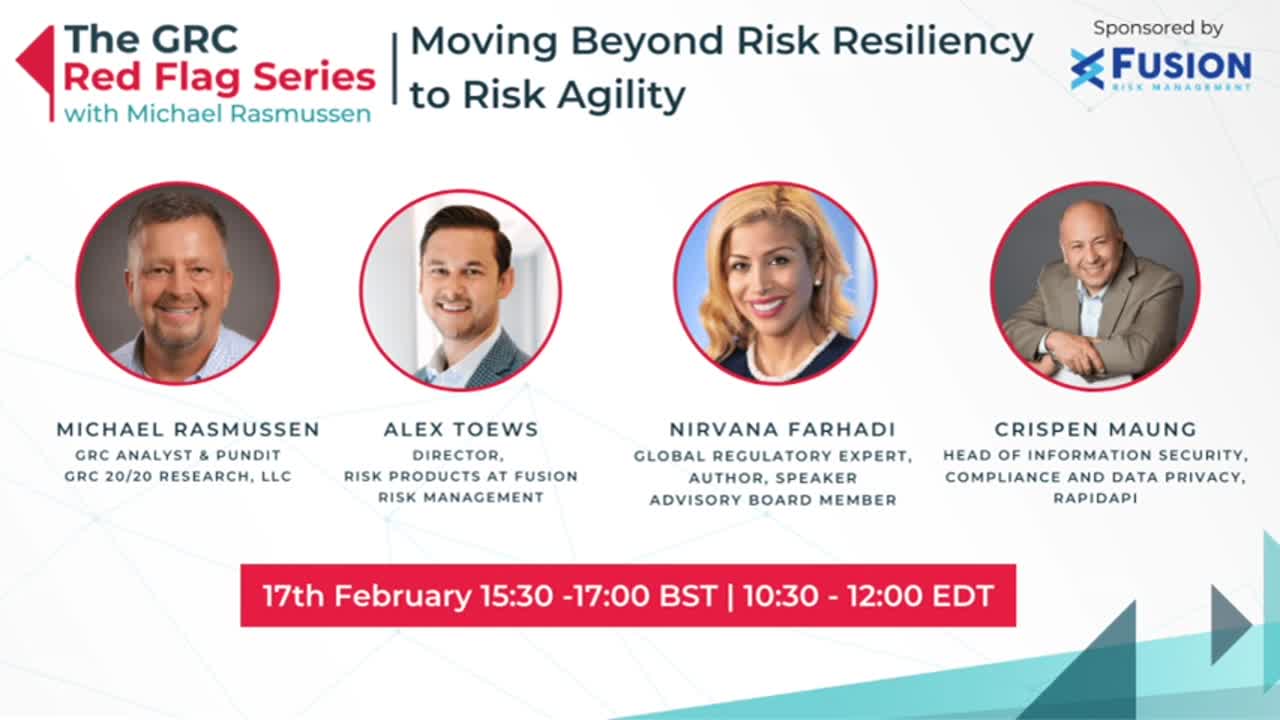This website uses cookies so that we can provide you with the best user experience possible. Cookie information is stored in your browser and performs functions such as recognising you when you return to our website and helping our team to understand which sections of the website you find most interesting and useful.
Moving Beyond Risk Resiliency to Risk Agility

Gone are the years of simplicity in business operations. The interconnectedness of objectives, risks, resilience, and integrity require 360° contextual awareness of risk and resiliency. Organizations need to see the intricate relationships and impacts of objectives, risks, processes, and controls. It requires holistic visibility and intelligence into risk and resiliency.
Organizations take risks all the time but fail to monitor and manage this risk effectively in an environment that demands agility. Too often, risk management is seen as a compliance exercise and not truly integrated with the organization’s strategy, decision-making, and objectives. It results in the inevitable failure of risk management, providing case studies for future generations on how poor risk and resiliency management leads to the demise of organizations – even those with strong brands.
Organizations need complete 360° situational awareness and visibility into their processes, operations, objectives, and risks. What complicates this is the exponential effect of risk on the organization. The business operates in a world of chaos, and even a small event can cascade, develop, and influence what ends up being a significant issue.
Dissociated siloed approaches to risk and resilience management that do not span processes and systems can leave the organization with fragments of truth that fail to see the big picture across the enterprise, as well as how it impacts their strategy and objectives.
The organization needs visibility into objective and risk relationships across processes. The complexity of business and intricacy, as well as the interconnectedness of risk data, requires that the organization implement an enterprise view of risk and resilience monitoring, automation, and enforcement.
This GRC Red Flag series will focus on how successful risk and resilience management requires the organization to provide an integrated strategy, process, information, and technology architecture.
The goal is a comprehensive, straightforward insight into risk and resilience management to identify, analyze, manage, and monitor risk in the context of operations, processes, and services.
It requires the ability to continuously monitor changing contexts and capture changes in the organization’s risk profile from internal and external events as they occur that can impact objectives. As a result, organizations are measuring their current state and planning toward a future state of increased risk and resilience maturity in the organization.


